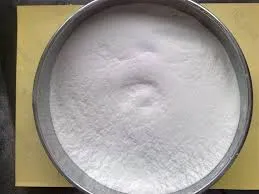
Sen . 30, 2024 07:01 Back to list
Understanding the HS Code for Redispersible Polymer Powder and Its Applications
Understanding Redispersible Polymer Powder and Its HS Code Classification
Redispersible polymer powder has become an essential component in various industries, especially in construction, coatings, and adhesives. This article explores what redispersible polymer powder is, its applications, and how it is classified under the Harmonized System (HS) code.
What is Redispersible Polymer Powder?
Redispersible polymer powder (RDP) is a dry powder that, upon contact with water, can be redispersed into a stable emulsion. Typically, RDP is produced by spray-drying a polymer emulsion. The most common polymers used include vinyl acetate-ethylene (VAE) copolymers, styrene-acrylic copolymers, and polyvinyl acetate (PVA).
These powders are utilized to enhance the performance of construction materials, providing improved adhesion, flexibility, and durability. RDP is commonly used in applications such as tile adhesives, cement-based mortars, wall putties, and self-leveling compounds.
Applications of Redispersible Polymer Powder
The versatility of redispersible polymer powder allows it to serve a multitude of purposes
1. Construction Industry RDP is primarily used in cementitious formulations, significantly improving bond strength and flexibility. It resists cracking and shrinkage, making it ideal for repairing surfaces and laying tiles.
2. Adhesives and Sealants In adhesive formulations, RDP enhances the water resistance and overall durability of the product. It allows for greater flexibility, making sealants more adaptable to movement and aging.
4. The Textile Industry RDP can also be used in textile finishing, providing benefits such as improved dye adhesion and fabric softening properties.
redispersible polymer powder hs code

5. Paper and Packaging Another important application of RDP is in improving the strength and durability of paper products.
The Importance of HS Codes
The Harmonized System (HS) serves as an international nomenclature for the classification of traded products. It assigns a unique code to every type of product, facilitating trade, tariff, and statistical purposes. Proper classification is crucial as it impacts import/export duties, trade regulations, and product specifications.
HS Code for Redispersible Polymer Powder
Redispersible polymer powders typically fall under the HS code 3904. This category includes polymers and copolymers of vinyl chloride or other halogenated olefins, including those used in the production of granules or powders. The exact classification may vary based on the specific type of RDP and its formulation, so it is crucial to ensure accurate identification.
To determine the correct HS code, one must consider several factors
1. Chemical Composition The specific type of polymer and its additive content can affect classification. For instance, following specific guidelines from your national customs authority will yield accurate results.
2. Product Formulation Different formulations may have different uses, which can influence their classification.
3. Place of Manufacture Where the product is manufactured can also play a role in HS code determination, including specific regulations set forth by individual countries or regions.
Conclusion
Redispersible polymer powders are integral to numerous industries, particularly in construction and coatings. Their properties not only enhance the performance of materials but also contribute to the growth and innovation within these sectors. Understanding its applications and the correct HS code classification is essential for businesses involved in international trade, ensuring compliance with customs regulations and optimizing import/export processes. As industries continue to seek efficient and high-performance solutions, the significance of RDP will undoubtedly increase, supporting advancements in material science and application technology.
-
What is HPMC?
NewsJun.06,2025
-
Understanding Redispersible Powder: The Future of Construction Materials
NewsJun.06,2025
-
Understanding RDP Powder: The Ultimate Solution for Your Construction Needs
NewsJun.06,2025
-
Pure HPMC: The Ideal Solution for Modern Construction and Building Materials
NewsJun.06,2025
-
Methyl Hydroxyethyl Cellulose: A Versatile Chemical Compound
NewsJun.06,2025
-
Hydroxyethyl Cellulose Power: The Essential Chemical for Various Industries
NewsJun.06,2025







